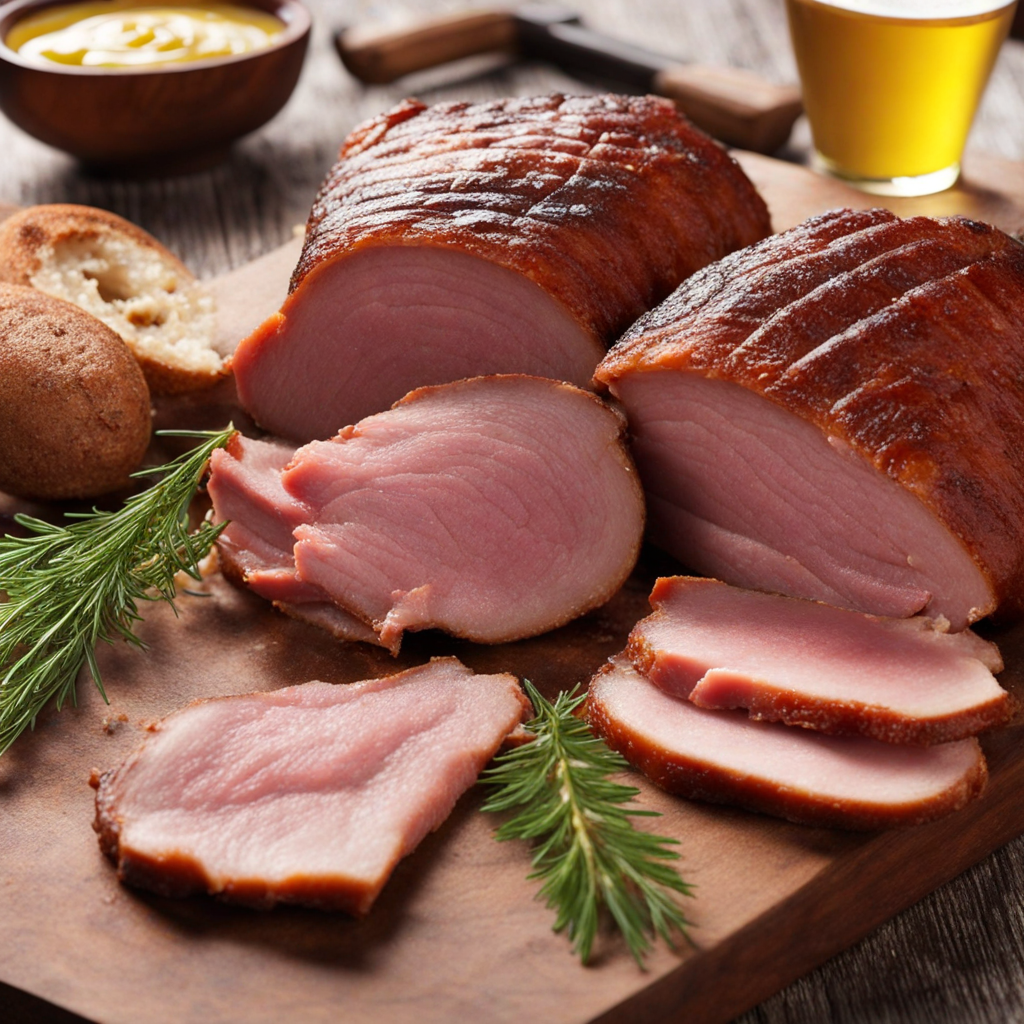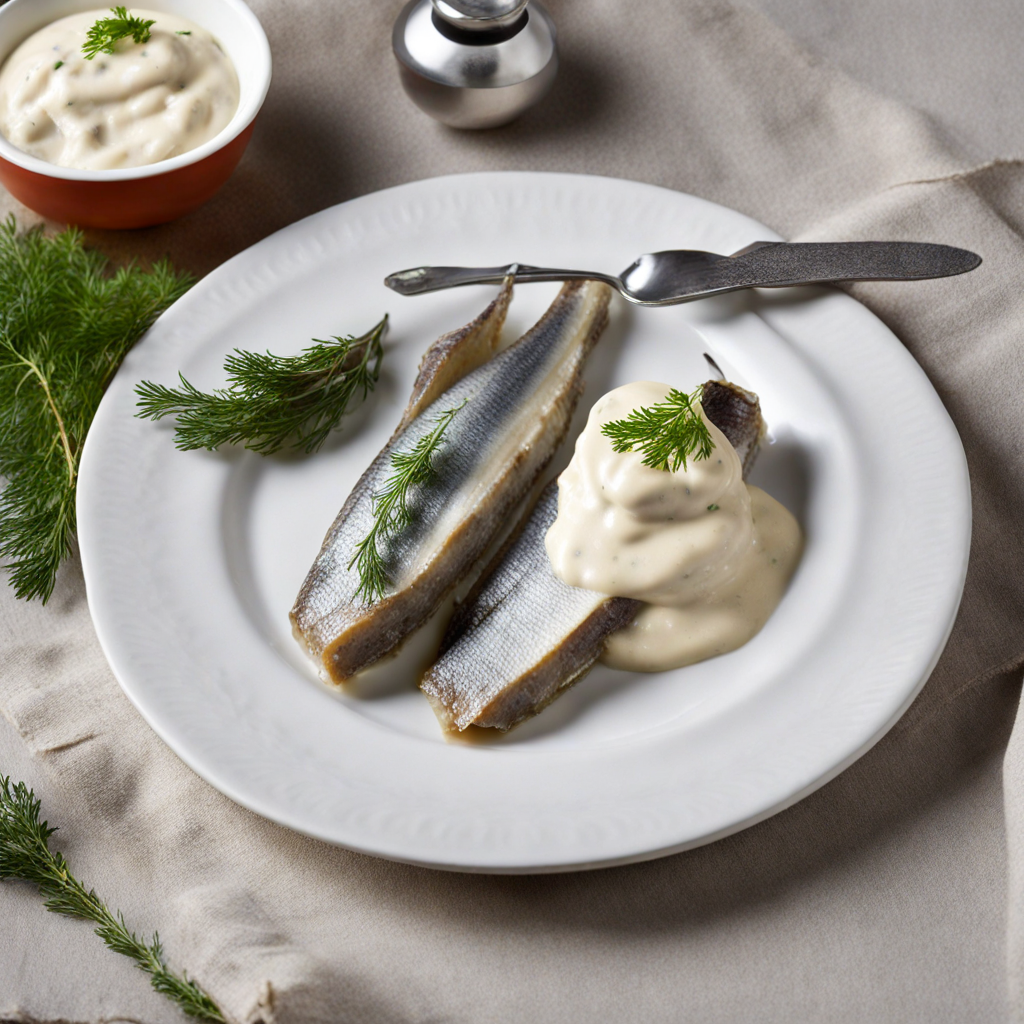Smoked Pork
Smoked pork, or "suitsuporss," is a traditional Estonian delicacy that embodies the rich flavors and rustic cooking techniques of the region. The process begins with high-quality pork, often sourced from local farms, which is carefully cured and then smoked over beech or alder wood. This method imparts a unique depth of flavor, creating a balance between the savory, meaty essence and the sweet, aromatic smoke. The result is a tender, succulent cut of meat that is both hearty and comforting, perfect for cold Baltic evenings. The taste of smoked pork is a delightful experience, as each bite reveals layers of flavor—slightly salty, mildly sweet, and infused with a smoky aroma that lingers on the palate. This dish is often enjoyed in various ways; it can be served as a main course, sliced thinly for sandwiches, or even diced and added to hearty stews. Its versatility makes it a staple in Estonian kitchens, where it is frequently accompanied by traditional sides like rye bread, potatoes, and pickled vegetables, enhancing the overall experience with contrasting textures and flavors. In Estonia, smoked pork is not just a dish but a part of the cultural heritage. It is commonly featured during festive occasions and gatherings, bringing people together to enjoy its rich taste and the warmth it provides. For those looking to explore new flavors, smoked pork offers a unique culinary journey that reflects the essence of Estonian cuisine—a blend of natural ingredients, time-honored techniques, and a deep connection to the land and its traditions.
How It Became This Dish
The History of Suitsusink: Estonia’s Smoked Ham #### Origins Suitsusink, or smoked ham, is a beloved traditional dish in Estonia, reflecting the country’s rich culinary heritage and deep-seated customs related to food preservation and preparation. The origins of suitsusink can be traced back to ancient times, when Estonians, like many other cultures, relied on smoking as a method to preserve meat. With a landscape abundant in forests and a climate that lends itself to smoking processes, the craft of suitsusink developed into an art form. The practice of smoking meat has roots in the prehistoric era, when Estonians would hang animal carcasses over smoldering wood to enhance flavor and prolong shelf life. This method not only prevented spoilage but also added a distinctive smoky aroma that became a hallmark of Estonian cuisine. The traditional Estonian pig, the "Estonian Native Pig," is particularly significant in this context, as it was historically bred for its suitability for smoking and curing processes. #### Cultural Significance Suitsusink is more than just a culinary delight; it is intertwined with Estonian identity and cultural practices. Historically, smoking meat was a communal activity, often involving families or entire villages. The preparation of suitsusink typically takes place in the late autumn or winter, coinciding with the slaughtering season. This timing aligns with the traditional Estonian calendar, marking a period of feasting and celebration, especially during Christmas and other festive occasions. In Estonian folklore, suitsusink is often associated with hospitality and abundance. It is customary to serve this delicacy to guests during major holidays, reinforcing social bonds and showcasing the host's culinary prowess. The dish is typically accompanied by dark rye bread, mustard, and pickled vegetables, creating a balanced meal that highlights the flavors of the ham while also showcasing the local agricultural products. Moreover, suitsusink has a significant place in Estonian rituals and traditions. At weddings, for instance, it is served as a symbol of prosperity and good fortune, embodying wishes for a fruitful marriage. In many families, the recipe for suitsusink is passed down through generations, embodying a sense of heritage and continuity. #### Development Over Time The development of suitsusink over the centuries has been influenced by various factors, including social changes, culinary trends, and globalization. In the early 20th century, Estonia underwent significant political and social transformations. The rise of nationalism and the pursuit of independence from foreign rule fostered a renewed interest in traditional foods, including suitsusink. During this period, many Estonians began to document their culinary traditions, ensuring that recipes and methods were preserved for future generations. Post-World War II, during the Soviet occupation, traditional foods like suitsusink faced challenges. The emphasis on industrial production led to the standardization of food processes, and many families resorted to mass-produced alternatives that lacked the authentic flavors of homemade versions. However, the love for traditional cuisine never waned; instead, it sparked a movement among home cooks to reclaim traditional recipes and methods. The restoration of Estonian independence in 1991 marked a renaissance for traditional foods, including suitsusink. Chefs and food enthusiasts began to celebrate and promote Estonian culinary heritage, leading to the revival of artisanal smoking techniques. Local farmers and producers started to focus on high-quality, local ingredients, leading to a resurgence in the popularity of suitsusink made from heritage breeds of pigs. Today, suitsusink can be found in markets across Estonia and is celebrated as a gourmet product. Various festivals and events now highlight traditional foods, with suitsusink often taking center stage. It has become a staple not just in homes but in restaurants, where chefs experiment with modern interpretations while still honoring the classic techniques. #### Modern Variations and Artisanal Production In recent years, the artisanal movement has led to a diversification of suitsusink products. While traditional methods remain, contemporary producers are exploring innovative flavors and techniques, including the use of different types of wood for smoking, such as juniper or applewood, which impart unique tastes. Some artisans are also experimenting with various spices and marinades, pushing the boundaries of traditional recipes while still respecting the essence of suitsusink. Additionally, the rise of the farm-to-table movement and a growing interest in sustainable practices have led many producers to emphasize ethical farming methods and local sourcing. This has resulted in a new appreciation for suitsusink not only as a food product but as a representation of Estonia’s agricultural landscape and cultural history. #### Conclusion Suitsusink is more than just a smoked ham; it is a symbol of Estonia's culinary heritage, reflecting the country's history, culture, and social practices. From its ancient origins as a method of food preservation to its status as a cherished delicacy served during festive occasions, suitsusink encapsulates the spirit of Estonian hospitality and tradition. As Estonia continues to evolve, so too does the appreciation for suitsusink, ensuring that this traditional dish remains an integral part of the nation's identity for generations to come. Through its evolution, suitsusink serves as a delicious reminder of the past while embracing the future, embodying the resilience and creativity of Estonian cuisine.
You may like
Discover local flavors from Estonia







